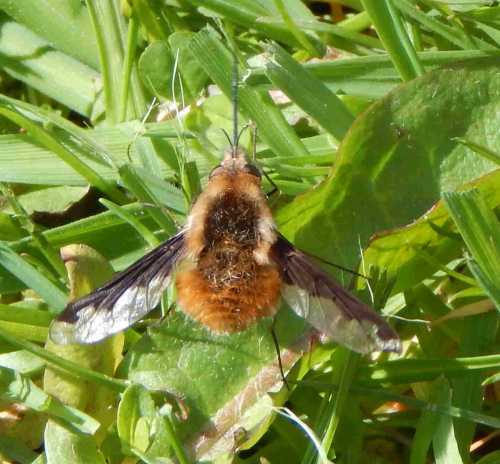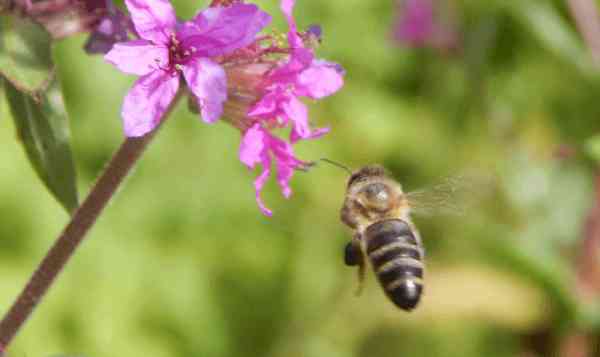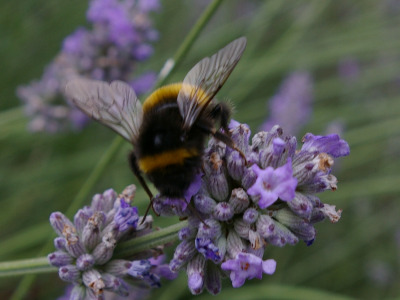The Large Bee Fly
- Bombylius major
Updated: 20th April 2021
The Large Bee Fly - Bombylius major, can at first sighting, easily be mistaken for a bee. Indeed, there are a number of bee species with very similar, gingery colouring.
About Bombylius major
Like other bee mimics, Bombylius major has a furry body, and can be seen visiting and foraging for nectar from flowers, just as bees do.
However, the bee fly is actually a parasite of solitary bees (especially the Andrena species), wasps and beetles.
When ready to lay eggs, it locates a suitable
host nest, and lays them at the entrance, even flicking them to the site of
ground nesting bees and wasps.
 The Large Bee Fly - Bombylius major.
The Large Bee Fly - Bombylius major.
Here is a video of Bombylius major feeding:
The larvae, whilst inside the nest of the host, eat the developing grubs they find there as soon as they are ready to pupate.
As part of their courtship ritual, adult male specimens ‘spin’ at females and dart at rival males to drive them away.
How To Distinguish A Bee Fly From A Bee
To distinguish a Bombylius major from bees, look out for the following features:
- In comparison with bee eyes, the eyes of the bee fly are close together at the front of the head, and appear almost ‘beady’!
- An extra long proboscis in comparison with the
body. Bees land on, and (depending on flower shape), sometimes crawl into the flowers they
forage upon, but Bombylius major will often (though not always), hover at the
flower, almost like a hummingbird (or hummingbird hawk-moth, for that matter),
with tongue extended, feeding on nectar, before resting on the flower.
- The body is, in a sense, a little triangular shaped. Solitary bees and honey bees tend to have an elongated
oval/elliptical shape, bumble bees have rounder, ‘curvy hour-glass-shaped’
bodies.
- The legs
are long (longer than those of bees or wasps), and the rear legs fan out at the
back of the body – easily seen whilst the fly is hovering by flowers.
- If resting, it may be possible to see that, like other flies, this species has only one pair of wings, whereas bees have two. Being a fly, it does not collect pollen for
feeding to larvae, and has no pollen baskets
on the legs, unlike female true (non-cuckoo) bumble bees, some solitary bee species, and honey bee workers.
- As well as hovering, this bee mimic darts about from one location to the next.
They may be seen out and about from April through to June. They forage on a range of flowers, and I have seen them foraging on pulmonaria, muscari, forget-me-not, hyacinth, aubretia, and primula.

